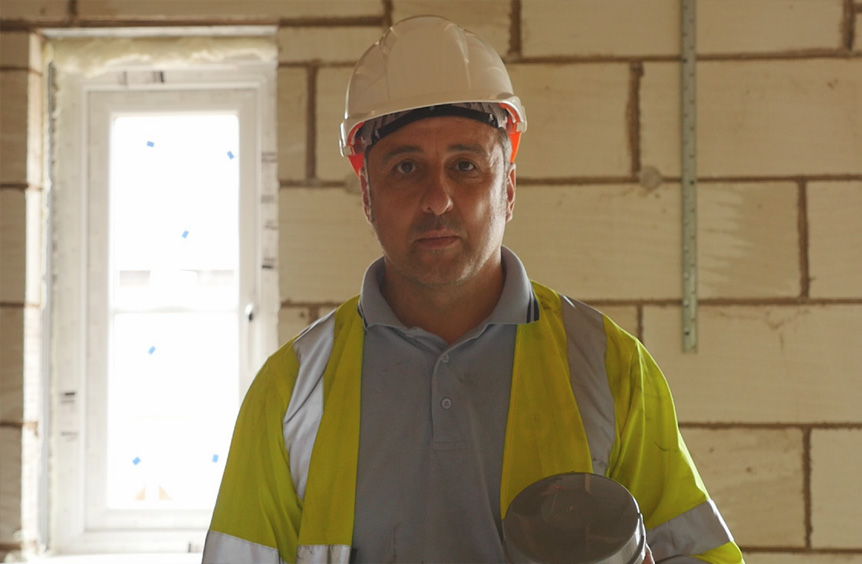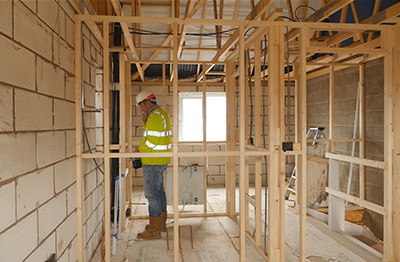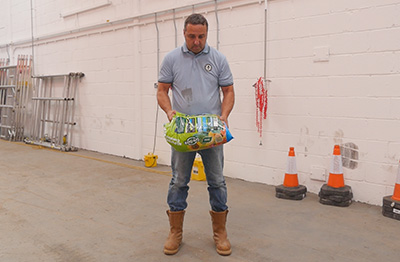Unique Compliance Training
Reimagined and Redelivered

Aimed at:
The programme is specifically designed to
appeal to anyone entering into the Construction
Industry at a labour level through to more senior
managers and directors.
Construction Acadmi is launching with a series of
unique, engaging and highly interactive courses exploring
the day-to-day risks of working in the Construction
Industry through the eyes of an individual employee.
Each Trainee will need to take an active involvement -
effectively taking on the role of the worker, weighing
up and evaluating the information presented to
them and making critical decisions to determine and
manage their risk, throughout their day - both onsite
as well as at home. Through these choices, an
employer will not only be able to test the trainee’s
day-to-day behavioural decision-making but also, make
active recommendations to improve both their shortterm
safety and long-term health conditions as well
as avoid suffering a fatal or serious injury on-site.
Split across three different story-like courses or
‘episodes’, as we call them, users will be faced
with making specific choices or ‘Decision Points’,
resulting in 16+ possible conclusions to each
episode – ranging from the positive to the other
extreme of potentially damaging, debilitating
& fatal consequences for the worker.
Attached throughout each storyline at key moments
will be an extensive range of ‘Information Points’
as well as ‘Exercises & Games’ that trainees
can view or interact with, all relating to the
core compliance subject of each episode.
This is a completely new approach to delivering
compliance training that will engage each viewer
through its relatability - reinforcing learning and
the importance of making life-changing choices
and best practice decisions on a daily basis.

Outline:
“Breathing easy” is an interactive learning module which allows the
participant to observe the potential effects on the lungs throughout
a normal working day and the challenges on the respiratory system in
defeating hazardous substances.
How will the lungs deal with the simple task of sweeping up after
chasing out a wall? Does it matter if a worker wears a mask or not
whilst on-site? How does facial hair affect the exposure to asbestos
and silica dust? What other sinister hidden substances and materials
are there on a Construction Site that could affect a worker? How do
you use the right Dust Extraction or Suppression Tools to mitigate the
risks to a worker’s health?
The course will teach the trainee to identify and ask the right
questions to protect them from Asbestos and Silica Dust exposure
whilst also, at the same time, emphasising the importance
of legislation and documents, such as an Asbestos Register &
Management Plan.
Learning Objectives:
By the end of this episode participants will:
- Identify the effects of accumulative exposure to harmful substances on the lungs
- Identify the physical effects of short and long-term exposure to asbestos
- Recognise appropriate control measures to prevent and mitigate harmful effects
- Understand how seemingly minor decisions can have a long-lasting effect and impact
- Be able to site the benefits of applying legislation within the workplace
- Understand key asbestosrelated documentation

Outline:
This episode explores the pressures and strains that we put our
bodies under during the course of a single day, affecting parts of
the musculoskeletal system that are often overlooked by traditional
manual handling courses. The episode looks at the wider range of
biomechanical functions and how the poor choices we make on a daily
basis can potentially contribute to pain and discomfort. Pain is not
always related to something heavy being lifted incorrectly.
This episode is about embedding best practice behaviour – not only
at work but also from the moment we wake up until the time we
go to sleep. What’s the best way to pick up a heavy bag? When is it
appropriate to ask others to help? Or to use mechanical aids? What
footwear should one wear to work? And what equipment do you need
when not working in a neutral position? Through the episode, trainees
will learn that making these minor adjustments and changes in our
daily behaviour can have significant long-term improvement on a
worker’s health and ability to work as well as earn money.
Learning Objectives:
By the end of this episode participants will:
- Understand the ability of the musculoskeletal system and its subsequent limitations
- Be able to evaluate the actions required to prevent non-neutral posture
- Understand the actions required to reduce the chance of short & long-term injury
- Be able to distinguish between poor human lifting techniques and LOLER planned activity
- Understand and be able to select the mechanical alternatives for lifting equipment
- Understand the benefits of regulations related to the use of equipment in the workplace

Outline:
The final episode in the course takes an in-depth look at the more
immediate dangers posed to a worker’s safety through working at
height. The Work at Height Regulations and the fundamental Law of
Gravity form the basis to this section of the course. Despite extensive
information and training within the workplace, this episode explores
the pressures placed on workers to compromise on safe practices in
order to complete or expedite the job at hand.
This episode explores the multitude of factors that affect a
worker’s decision-making including the selection and suitability of
equipment to assist working at height (both regulation as well as
improvised), its inspection and the competency of those workers
using that equipment. All of that is combined with the demands and
requirements from planning and organising work along with optimising
time and resources for commercial reasons.
Learning Objectives:
By the end of this episode participants will:
- Understand the legal requirements for working at height
- Be able to apply those Industry Regulations to a real-life working environment
- Recognise the need to select the appropriate equipment to assist working at height
- Understand the value and importance of a pre-inspection and the associated risks
- Understand the competencies required to operate that equipment
- Learn to evaluate the behaviour required to avoid compromise in safety standards
- Recognise the choices available for remaining safe & competent in extreme situations





